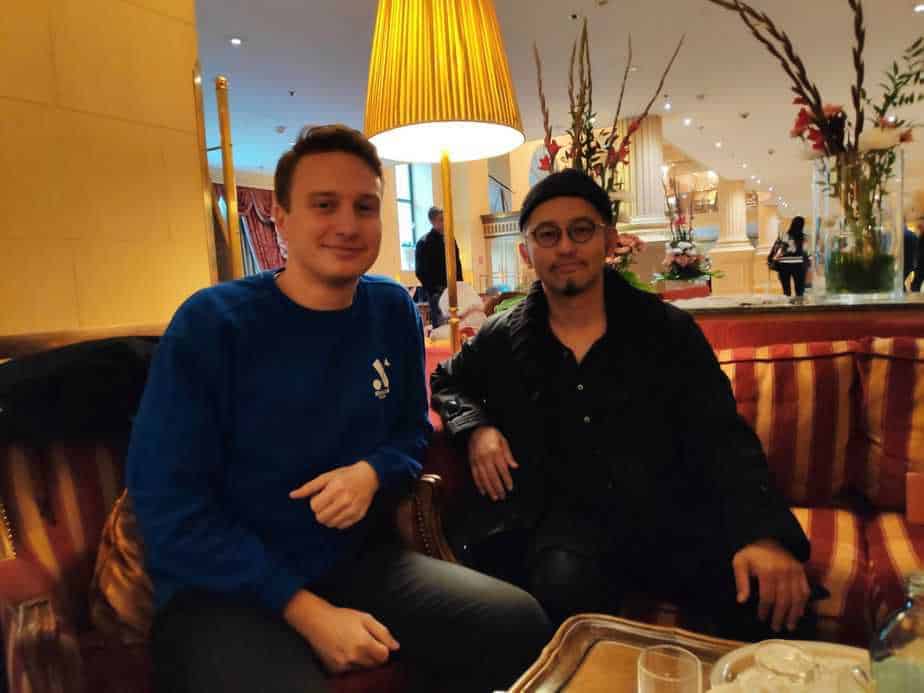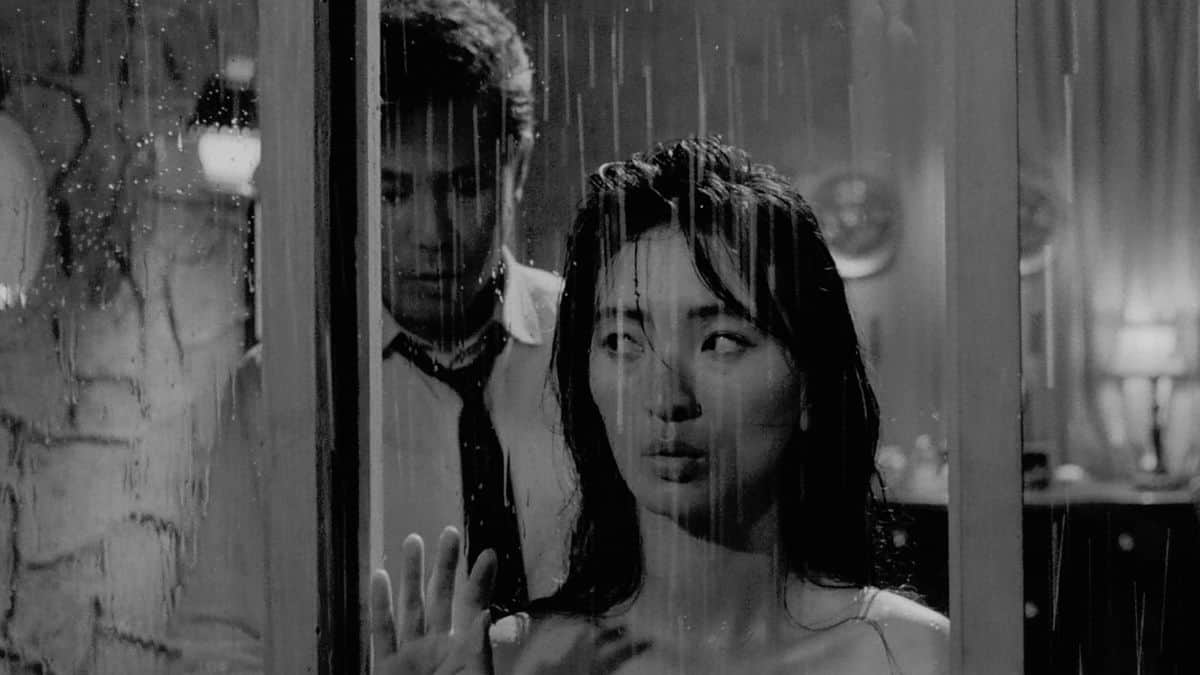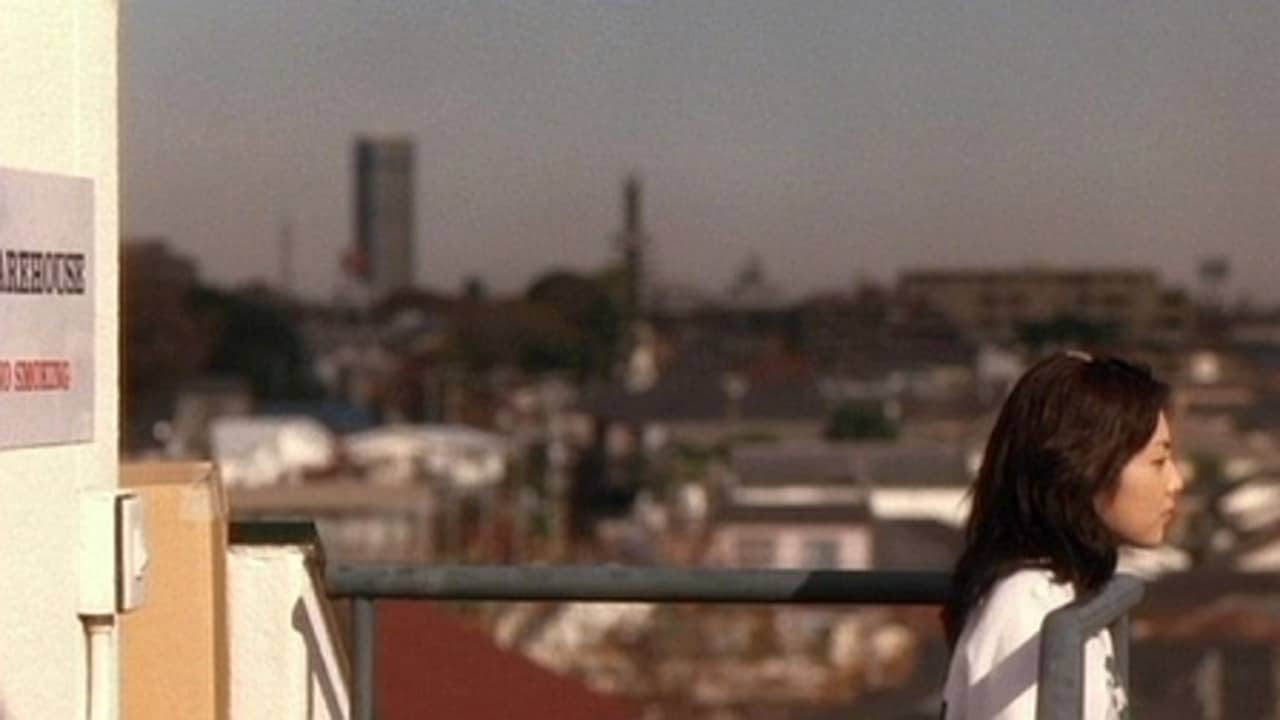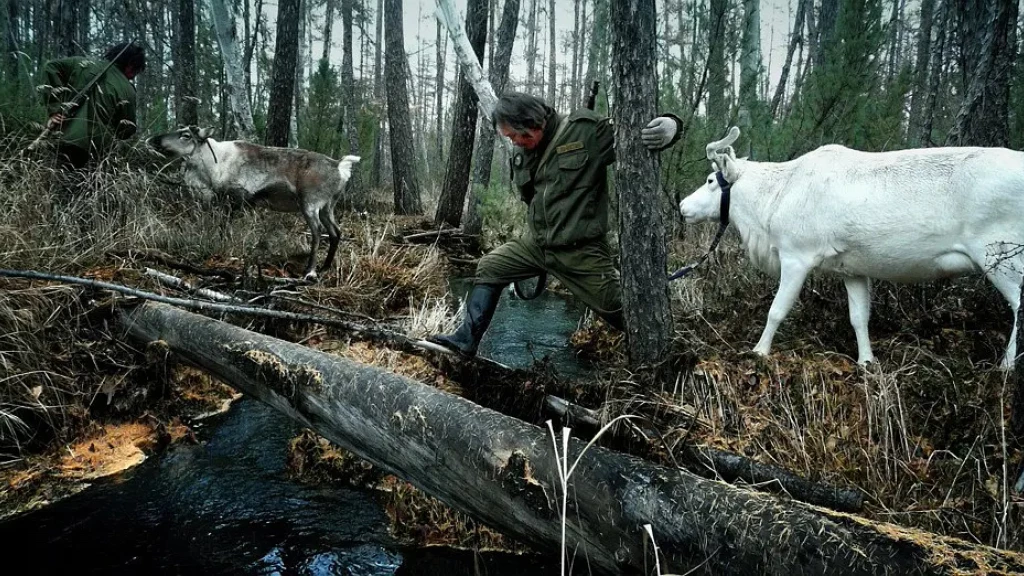Director Kosai Sekine visited the third edition of the Japannual Film Festival to present his two movies “Love at Least” (2019) and “Tower of the Sun” (2018).
Kosai Sekine made his debut in 2005 with the short-film “Right Place”. In the following year, he won the Young Director Grand Prix Award in Cannes for “Daughter”. Since then, he has been working in the advertisement and music industry. He made commercials for Toyota, Google, UNIQLO, and many other companies. In 2010, Sekine directed the “Nike Music Shoe” campaign, which earned him the Silver Award at Cannes Lions.
With “Love at Least” as a fictional, and “Tower of the Sun” as a documentary movie, the Japanese director enters the territory of full-length theatrical motion pictures. Enough reasons to sit down with him and do a full-length interview.
You are already very successful in commercials as well as in the short film business. When did you decide to shoot a feature film?
Doing feature films was always my dream and my goal in life. But when I started filmmaking, the Japanese economy was going downhill. It was not a good moment to start a project like that. I knew that a lot of filmmakers were not able to finance their movies. My other interest in doing a movie was to shoot on negative film. Like it used to be done in the past. But this was also difficult to do at that time. The only possibility to experiment with negative film was in commercials.
You also shot “Love at Least” on negative film, and on 16mm. Why did you choose that format?
In commercials, I wanted to learn how to film with this format and get the feeling of seeing the movie on actual film material. Then I realized, when a movie made me emotional, that was always a movie which was shot on negative film. That's why I got really interested in that and also used it on “Love at Least”.
I like the cast of “Love at Least” very much. Actually, I was surprised by the small appearance of Yutaka Matsuhige as chief newspaper editor, because I am a fan of „Kodoku no Gurume“. How was the casting process and how did you find your two lead actors, Shuri and Masaki Suda?
We had a long casting process. “Love at Least” is a story about a young woman, who has bipolar disorder. To face this mental issue, it was necessary to find a fitting cast. In the end, it took more than one year.
Masaki Suda (“Assassination Classroom” 2015) is a big name in Japan right now. He made his career as a cinematic actor by the work of my producer Masaki Kai (“Adrift in Tokyo” 2007). So there was kind of a connection between us and he knew that Kai and I are trying to develop a cinematic script. Masaki got interested and wanted to read the script. As soon as he read it, he wanted to join the project. Shuri (“Tremble all you Want” 2017), the main actress, has kind of the same connections to those people and also wanted to join us right after she got to read the script. We fell in love with her the moment we met her and we are very lucky to have her. She has a strong skill of acting, but also a deep character.
Shuri's Performance on screen is very authentic. Her role must have been very challenging on an emotional, but also physical level. How was the collaboration with her on set and also before the shooting while you were preparing the role?
My approach with her was to find the character of the script, Yasuko, inside of her. We had a lot of conversations in the casting process and I asked her quite personal questions, which gave me a deep understanding of her life. It was helpful to me that she has that emotional element, which made it easy for me to create the role with her. We came to that stage, where we finally didn't had to talk about the details of her role anymore.
Nevertheless, it was necessary to give her instructions during the shooting and to give her balance. Sometimes she couldn't stop herself, because her acting was very strong and emotional. In those situations, I had to bring her down. For example, in the rooftop scenes, where she confesses everything about her life and gives that very strong comment against her boyfriend. As soon as we started to shoot that scene, she got really worked up and I had to calm her down. That is important because I wanted to build up a certain feeling for the audience and the actor cannot stay in this high voltage mode, while we shoot other calmer scenes.
What's the reason for Yasuko's depression?
In the original novel, from which I created the script, the reason for her depression is her mother. Also, her way of life and her environment put a lot of pressure on her. The novel is from 2006, so the time was kind of different, but I think social pressure is much much stronger now than back then. In Japan, we kind of live in an intense atmosphere of conformity. Everybody has to think the same way. This may be because of politics or economics. It needs to be changed and I wanted to make a statement about that in the film. My goal was to make the audience think about it.
Have you met Yukiko Motoya, the author of the original novel? Has she seen the movie and what was her opinion about it?
Yes, she is my friend. Before my version, there were two other films done based on her book. At both screenings, Yukiko went out of the cinema. She was positively surprised when she saw my version and even came to the dinner party after the premiere.

In the past, you also did a lot of music videos. For example in collaboration with Hiroku Sebu, who is also part of the soundtrack of this movie. How did you choose the music for your film?
Hiroku Sebu actually composed most of the music. She and I have been friends for a long time. She also created a lot of music for my older projects. We had a long discussion about the tracks that she proposed for “Love at Least”. When you do a movie you cannot compromise. It is interesting when people get into the process of making a feature film, their mental state gets different.
What do you mean by that?
When you decide not to make any compromises for your work, your way of thinking sharpens. Sometimes it's too sharp, so we have to be careful. That's one of the toughest things while making a feature film.
Toyotaro Shigemori, who worked a lot with Toshiaki Toyoda (“I'm Flash!” 2012), did the cinematography. How was the collaboration with him?
We know each other for a long time. I filmed a lot of commercials with him and we were always talking about doing a feature film someday.
Depression is a very universal topic and I think that the audience outside of Japan can easily relate to the problems in your movie. Would you still agree that stylistic elements like cinematography and editing show a typical Japanese touch?
I don't think so. It is very difficult to define Japanese cinema. But the style in my movie is a bit different, maybe closer to other Asian films or even European cinema. I intended that “Love at Least” shouldn't look like a Japanese movie. Of course, as a filmmaker, I have love and hate for Japanese cinema.
Where do you get your inspiration from? Asian Cinema, European Cinema, Hollywood?
I think it is a combination of all of them. But, for example, when I tried to use a lot of color in the movie, I thought of Wong Kar-Wai. He has a lot of colors and I tried to take the roughness of his images.
Another specific question about „Love at Least“. The rooftop scenes are very impressive. Where did you shoot the movie and what was important for you concerning the settings?
We shot a little bit outside of Tokyo, close to Yokohama. It has a rougher and a more run-down atmosphere. I tried to place the characters in that kind of area. The rooftop scenes are shot on top of the film studio.

I also wanna talk about the current situation for filmmakers in Japan. How is the situation right now for young directors to promote their ideas?
It is very hard to say. A lot of Japanese filmmakers start their projects without thinking. It is good and bad. For example, last year there were over 600 films shot in Japan. That is a massive number of films. There aren't enough cinemas to screen all these movies and people are not really going to movie theatres anymore. There is that contradiction of accessible tools that make filmmaking easier, which makes a lot of people want to produce something, but on the other hand, there is no interest in watching it. It became a big problem. And also the budget for a single production gets lower, because of the huge number of films. In my opinion, we have to talk. We don't have any unions, so big studios like Toho dominate the whole market and I don't want to be part of the big studios. What I can say for sure is that the government was not supportive enough.
Let us talk about your documentary “Tower of the Sun”, which is about Japanese artist Taro Okamoto and his contribution to the World Expo 1970 in Osaka. It is really impressive and I learned a lot. My first question starts with a quote. Taro Okamoto said: „Art is determination“. Do you agree? Was „Tower of the Sun“ a movie that you had to do?
That is a very difficult question. I had a huge doubt about Japanese politics and I kind of tried to share the doubt. After Japan was occupied by Americans, we started to believe in everything they gave us and people stopped thinking. Japanese government used that to make people capitalistic. Then we had this big economic growth, which made people believe in money instead of the ethics that our ancestors used to have. At the time of the Expo, 1970, people started to realize that science and technology can earn you a lot of money. Other things became less important. That mentality our fathers and mothers used to have, caused the situation that we have right now. I wanted to talk about the things that lead to that path. In some ways, that was my determination.
The Expo in Osaka was an important event for Japan to present itself to the world. Just like the Olympics 1964. Next summer there will be another Olympic Games in Japan. What does Tokyo 2020 means to you?
I think the Olympics are representing one of the terrible things in our culture. We still have a lot of problems with Fukushima, but the government wants to do an economic jump with the Tokyo Olympics. That's why they try to hide the actual things that happened in Fukushima. They ignore the pollution and let people come from other countries, which is kind of insane. We will also have another Expo in Osaka next year. So it is quite similar to the time when the “Tower of the Sun” was built.
Do you think the ideas of Okamoto are still relevant today? And that you, as a filmmaker, have to remind the people about his work, his radical approach towards art and his critique on Japan's identity? Do you see yourself in that tradition?
That's right. It was one of the reasons for making that movie. I used to remember Taro Okamoto as a comedian, because in the second half of his life he went on a lot of TV programs and became pretty popular for his crazy jokes. By doing this film, I got to know his other side and I realized that I was wrong by judging him only by his TV character. He was actually a very serious person. Maybe even too serious.
You did a lot of interviews for this movie and gathered a lot of people from different disciplines. How did you choose them and how did you prepare the interviews?
A lot of people had some personal connection to Taro Okamoto or to the creation of the tower itself. The other half was chosen by my inspiration. I tried to tell a story that wasn't told in the history of Japanese art, so I called some people that are outside of this topic. When I presented those people to my producers, they didn't get it. They couldn't understand what they should contribute to the topic. But in the movie, it is very fitting. My goal was to display people from many different aspects of life. That's why “Tower of the Sun” is not just a movie about art. It combines religion, philosophy, and many other topics.
How many hours of raw interview footage did you shoot?
It is actually a massive number for that runtime. For each person more than two hours. Around 120 to 150 hours of material. A lot of editing.

The opening sequence is not done in a documentary style, it rather reminds me of a science-fiction movie. What are the meanings of these fictional scenes, that also present a mysterious woman? What does she represent?
One of the biggest woes in my life is that Japanese people don't want to watch documentaries. That's why I put in these fictional scenes. We tried to make use of this popular icon (The Tower of the Sun) that everybody knows about. But nobody actually knows its real meaning. Trying to make it watched by a lot of people, I tried to make it easier to digest for the audience. I wanted to use the pop-culture power of the tower, so that young people want to see it.
You already mentioned Fukushima. „Tower of the Sun“ also deals with Japan's nuclear past and present. For your project „Ivan Ivan“ (2018) you traveled to Chernobyl. How important is that topic for you? Do you feel the responsibility, as someone who can reach a big audience, to explain the dangers of nuclear power?
Film is a very strong medium to make people believe in something and to change their mental state. I was changed by watching films, too. Film can be used for good and bad things. Like the Nazis tried to convince people of their ideology by showing them movies. History proves that this is a really strong medium. In that sense, the creator of the medium has a responsibility to make this art. If the outcome is very mainstream or funny, a lot of people can laugh about it, which is a good thing. But that doesn't make people think about their life. My approach was not to do that. I want people to start thinking and may change their thoughts.
You are involved in „NOddIN“. Can you tell me more about this artist's collective?
“NOddIN” is the anagram of “Nippon”, which is the Japanese word for Japan. I wanted to make our country looked at from a different point of view. After the Fukushima incident in 2011, me and my befriended filmmakers, who did a lot of commercials, got together and talked about it, because we could not go on in a normal way. We felt that we might have helped Fukushima happened. We wanted to take the power over our own life back because we realized a power imbalance in Japan. The social engagement in arts was very little at that time. Right now, we are around 30 people, but we are still very little.
What is your next project?
I'm working on a documentary about Noh, the traditional Japanese theatre, which is not being played in its original style anymore. Nowadays Noh is silent and slow. The original Noh is very violent and animal-like. It will be about the ancient state of humans. And there will be also more feature films in the future.















